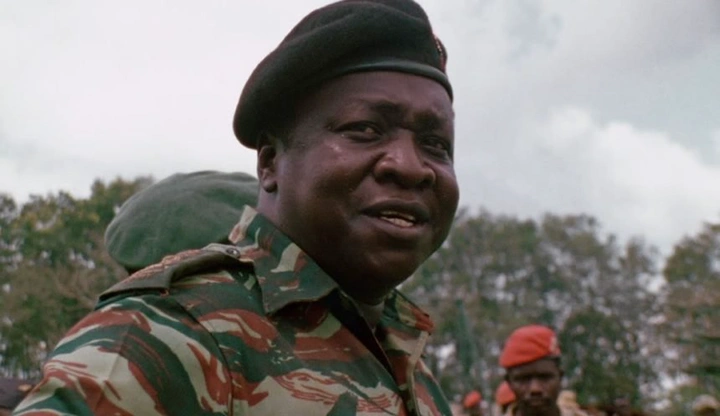In 1976, Uganda’s president at the time, Field Marshal Idi Amin Dada, stunned East Africa by claiming that large parts of western Kenya rightfully belonged to Uganda. His statement almost pushed the two countries into open conflict.
Amin seemed convinced that colonial-era boundaries had robbed Uganda of land. He believed the British had unfairly drawn the map and that some territories in present-day Kenya were originally part of Uganda. To him, the answer to whether Uganda should reclaim them was simple: yes. The challenge was finding the right moment to make his move.
The Political Climate in Uganda
By the mid-1970s, Amin’s rule was marked by fear and violence. He used intimidation and killings to silence critics, targeting political opponents, church leaders, judges, and even ordinary citizens suspected of disloyalty. The economy was collapsing under his leadership. Essential goods like sugar, soap, and salt were extremely scarce, and if they appeared in the black market, they were sold at high prices. Agriculture, once a strong source of income, had suffered greatly as Amin diverted foreign earnings to fund the military. Fuel shortages worsened the crisis.
Inside Uganda, public dissatisfaction was rising. Across the border in Tanzania, his exiled rival Milton Obote was preparing rebels to attack. Amin needed a way to unite Ugandans behind him, and the historical land claim became a tool for rallying support.
A Colonial-Era Map Resurfaces
According to an old British map, the Uganda Protectorate once included areas deep inside what is now Kenya and South Sudan. In 1926, parts of this territory, including today’s Kenyan districts such as Busia, Kakamega, Kisumu, Eldoret, Kericho, Nakuru, and Nandi, were transferred to Kenya. Amin used this colonial history to argue that the land had been “stolen” and should be returned.
On February 14, 1976, during a public event in Kitgum District, Amin demanded that Kenya return these territories, particularly the fertile Rift Valley. He declared that God had not given these lands to Uganda by mistake and promised to reclaim them.
To push his agenda, Amin published a book titled The Shaping of Modern Uganda and Administrative Divisions. In it, he promised to share historical evidence of the boundary changes and insisted that Uganda’s border should be about 30 kilometers east of Nairobi.
Kenya Strikes Back
Kenya’s president at the time, Jomo Kenyatta, reacted quickly and firmly. Speaking to a huge crowd in Nairobi, he warned that Kenya would defend its borders at all costs. He urged citizens to be ready to fight anyone who tried to claim Kenyan land, whether with modern weapons or traditional ones like spears and arrows.
The tension escalated. Kenya deployed troops to the border, and crowds gathered to show support for their army. Effigies of Amin were burned in protest. The situation became even worse after Amin accused Kenya of helping Israeli forces during the Entebbe raid earlier that year. There were also reports that Amin and Somalia’s president, Siad Barre, were considering a joint attack on Kenya.
The Turning Point
When Kenyatta closed the Kenya–Uganda border, Uganda faced severe shortages of fuel and other essentials. Realizing Uganda was not ready for a war against a united and determined Kenya, Amin stepped back from his demands.
By the time Kenyatta died in 1978, relations had improved. Amin even attended Kenyatta’s funeral in Nairobi, walking through the streets to the burial site as crowds cheered.
Uganda’s Border Disputes Over the Years
Uganda’s territorial issues did not end with Amin. The country has had several border disagreements since independence. Examples include Amin’s invasion of Tanzania’s Kagera region in 1978, the dispute over Migingo Island with Kenya in 2009, conflicts over Lake Albert with the Democratic Republic of Congo, and repeated cattle raids from Kenyan communities into Karamoja.
Leaders on both sides have made strong statements about these disputes. Kenyatta once told those claiming Kenyan land to “go to hell.” Amin described himself as the “Conqueror of the British Empire” during the Kagera war. Museveni has also referred to colonial maps showing Ugandan borders stretching close to Naivasha and Mombasa, accusing Kenya of taking what did not belong to them.
Border tensions between Uganda and its neighbors remain a sensitive subject, with history, politics, and national pride continuing to shape the conversations.










